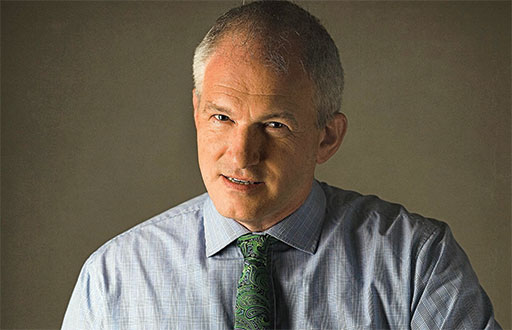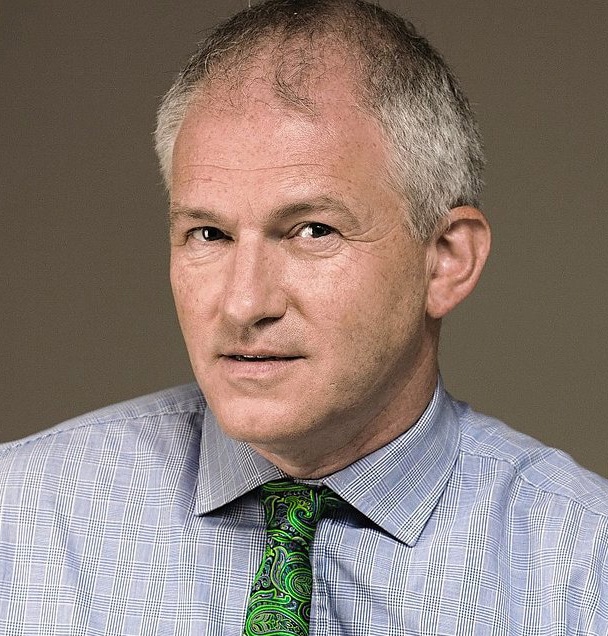by Philip Baum
International readers may not be familiar with the name Dominic Cummings. Those of you in the UK would have had to be living in isolation not to know who he is (oh, sorry, I forgot that is what we are all supposed to have been doing)!
Cummings is the Prime Minister’s muse. Without Cummings, it would appear, Boris Johnson is lost. The architect of the Brexit Vote Leave offensive, the fixer of Johnson’s crusade to become leader of the Conservative Party and the draughtsman of the Conservatives subsequent successful election campaign, he has an impressive ability to read the mood of the electorate and win. He is despised by the opposition parties and indeed by many of those in government, in part because he appears untouchable, unaccountable and now, so it seems, above the law.
Whilst the country, and world as a whole, were struggling to respond to the COVID-19 pandemic, and the need to comply with governmental guidelines critical to protecting lives, the news headlines in the UK towards the end of May were diverted to address a political storm. Yes, the backdrop was the coronavirus, but at its heart was the dilemma as to when, and by whom, regulations established to save lives can be broken…and what the consequences of such actions are.
To summarise: Living in London, Cummings’ wife started displaying signs that she might have coronavirus in late March, around the same time that Boris Johnson contracted the virus. With a four-year-old child to worry about, Cummings decided to drive 260 miles north to Durham in order that, should he become ill himself, his extended family would be on hand to support the care of their son. Allegedly they all isolated in a cottage, had food delivered to them and managed to socially distance. The problem, however, was that the Prime Minister’s chief advisor had, in effect, breached the government’s abundantly clear instructions that, given the national emergency, we should only leave our homes for a very specific list of necessities and that, if one had symptoms of the virus, one should isolate for 7-days and those living in the same household should remain in quarantine for 14-days. ‘Stay Home. Protect the NHS. Save Lives’ was the message.
Cummings, however, decided that this was not doable in London and, despite the fact that the vast majority of the population were struggling with being distanced from loved ones, he opted to drive the length of the country (allegedly, despite having a four-year old in the car, they did not stop en route, and nor has any explanation been given as to what they would have done had they needed to stop). It is true that one could leave home to protect a child, but this trip was clearly not in the spirit of the government’s message and the secrecy surrounding the trip makes it abundantly clear that the family, and Downing Street, also knew that this was problematic.
“…the constant stream of tweets of aircraft where it is abundantly clear social distancing is not happening…”
We might be inclined to give them the benefit of the doubt. Cummings did indeed develop symptoms consistent with coronavirus and the family did self-isolate. Yet on 12 April, after their quarantine period had ended, they took a road trip to the historic town of Barnard Castle. It happened to be Cumming’s wife’s birthday! The 30-mile trip was allegedly to enable Cummings to evaluate whether his eyesight was good enough to drive back to London the next day. Yes, he drove to a beauty spot with a four-year old in the car to see whether it was safe to drive! The height of irresponsibility if it were true, the epitome of arrogance if it were for pleasure. The family were seen in Barnard Castle and the media bruhaha ensued, prompting Cummings being afforded the abhorrent opportunity to have his own press conference in the Rose Garden at 10 Downing Street. Cummings refused to resign and Johnson has, so far, refused to sack him. Even if it were all true, Cummings should at least have had the decency to recognise that his personal situation was having a negative impact on the government’s core message to continue to stay at home and socially distance.
The general public, meanwhile, are now left questioning the importance of the government’s messaging. Indeed, they are angry. Repulsive scenes of Cummings’ home being besieged by hypocritical journalists and photographers, clearly not socially distancing, and vocal members of the general public who had total disregard for Cummings’ neighbours, let alone the impact their abusive comments might have on Cummings’ young son, were broadcast and made for disturbing viewing.
So, what, you might well ask, has this all got to do with aviation security? For me the lessons are abundantly clear. As the industry strives to recover from the economic tsunami, and put in place measures to protect the passengers and crew who, we hope, will return to the skies, the messaging we utilise must be based on common sense and reflect reality. Should we fail to do so, not only will we once again facilitate the spread of the virus (and, yes, whether we like it or not, aviation unwittingly played a key role in enabling the pandemic), but we will also have to respond to a surge in unruly passenger incidents.
We are already seeing the constant stream of tweets of aircraft where it is abundantly clear social distancing is not happening. Yet if one looks at the press releases emanating from the media relations departments of airlines and airports, the impression given is that the industry is really going to offer a safe environment for international travel.
“…performing temperature checks on passengers at the boarding gate does not mean that they are not carrying the virus…”
In our minds, we all have to juggle the health risk vs economic recovery dilemma – it’s nigh on impossible to prioritise both, so a balance has to be achieved. We’d love to kill off all opportunity for the virus to spread and truly lock down, but we know that even more lives will probably be lost if the economic repercussions are too cataclysmic.
Honesty is the best policy. We need to get people back in the skies, but our messaging should not attempt to disguise the risks. We must be clear about our countermeasures, and adopt a zero tolerance stance for those who wish to flout them, be they passengers, crew or other industry employees.
There are a number of facts that the aviation industry has to accept. First, coronavirus is going to be around for some considerable time. Second, performing temperature checks on passengers at the boarding gate does not mean that they are not carrying the virus – the symptoms may not yet have started to show or the passenger may have taken medication to reduce their fever just before the fever scan is performed. Third, we must be realistic that we might be able to socially distance on board aircraft, subject to seat configuration but, in the busier hubs, it is not feasible to maintain a two-metre distance from all people at all times in the airport. That is not a reason not to fly, but it is justification for transparency. After all, even a trip to the supermarket carries an inherent risk – and I have yet to make one trip to the shops and witness genuine social distancing throughout the shopping process.
The post-coronavirus flying experience concerns me from three security perspectives. First, as I wrote in my lead editorial in the last issue, security screeners will be tasked to perform health checks, thereby diverting their attention from the very real, and current, terrorist threats the industry faces. Second, socially distanced protocols at checkpoints are further diluting the responsibility of the human being in the detection of threats and fuelling the ill-judged drive towards completely automating the screening process. The inability to see passengers’ expressions behind COVID-19 masks, the likely reduction in close-up pat down searches and a greater reluctance to search belongings by hand could have grave consequences. But don’t underestimate the third challenge – unruly passengers.
“…fear and frustration also have a significant impact on a passenger’s mood, and these can be exacerbated by mixed messages…”
Acts of unruly behaviour in the aircraft cabin have been increasingly challenging aircrew. The rationale behind each incident is different and intoxication is far from being the only cause. Fear and frustration also have a significant impact on a passenger’s mood, and these can be exacerbated by mixed messages. Reassuring passengers that we are offering them a safe travel environment and then seating them closer to a stranger than they have been with their own family and friends during lockdown is going to result in angry outbursts. Crewmembers, or any airline or airport employee, that are not seen to be socially distancing whilst we ask passengers to don masks and request permission to use the lavatories will grate.
What we witnessed outside the home of Dominic Cummings could take place on board aircraft, with no police on hand to diffuse the situation. All the more reason for us to practice what we preach and not adopt a ‘do as I say, not do as I do’ attitude. There is much about our approach to aviation security that does not appear to be based on common sense, but with everybody listening for months now to the messages regarding how to remain safe in the coronavirus era, it is of absolutely fundamental importance that the aviation industry recovers economically whilst also being an exemplar of safety best practice – something the industry has long been lauded for and cannot now afford to denigrate.

